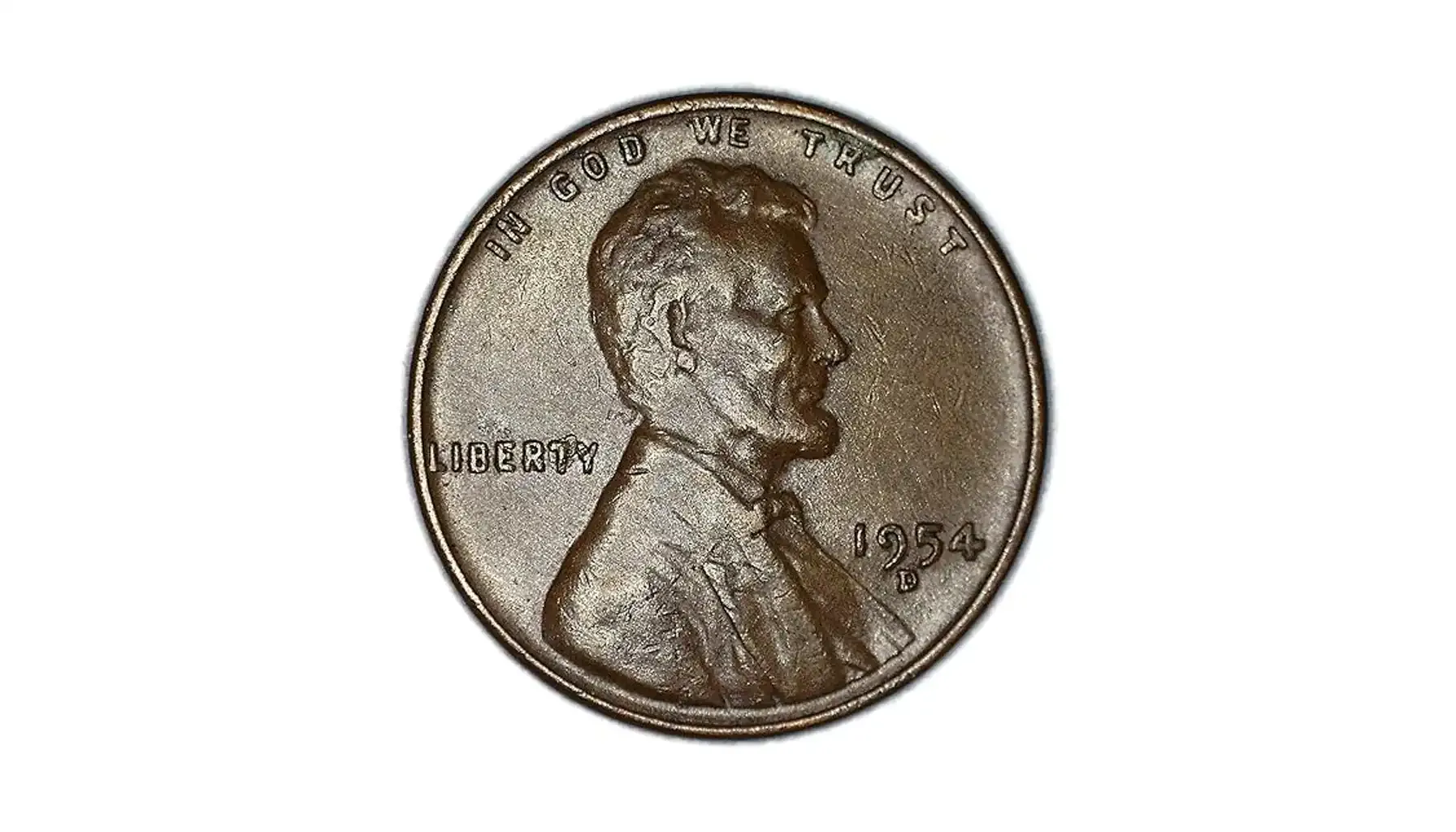Contents:
Understanding a coin's value involves several key factors:
Rarity: This is often the first consideration. Rarity isn't just about age; it's about how many examples of a specific coin, series, or error exist. Lower original mintages (how many were produced) usually mean higher rarity.
Condition (Grade): To determine how much is a 1918 Wheat Penny worth, its condition is the most crucial factor. A coin's condition is assessed on a universally accepted scale, from "Poor" (hardly recognizable) to "Perfect Uncirculated" (MS-70). Slight differences in wear, luster, toning, and surface marks can lead to significant price discrepancies.
Demand: Even rare, high-grade coins won't fetch top dollar without collector interest. Popular series (like Lincoln Cents or Morgan Dollars) generally have higher demand than obscure types. Historical significance, aesthetic appeal, or specific features can also drive demand. You can find all about your coin through coin identifier app for free.
Other Influencing Factors
Mint Mark: Coins minted in different locations (e.g., Philadelphia, Denver, San Francisco) often have varying mintages, affecting their individual rarity and value.
Errors and Varieties: These are distinct from normal issues due to anomalies during minting. Doubled dies, off-center strikes, or mint marks can dramatically increase value if rare and appealing.
Toning: Natural toning (patina) developed over time can sometimes enhance a coin's aesthetic appeal and value, especially if it's vibrant and attractive. For example, the 1918 Lincoln penny continued the popular design introduced in 1909.
Provenance: A coin's history of ownership, especially if it belonged to a famous collector or was part of a renowned collection, can add a premium.
1918 Philadelphia Wheat Penny
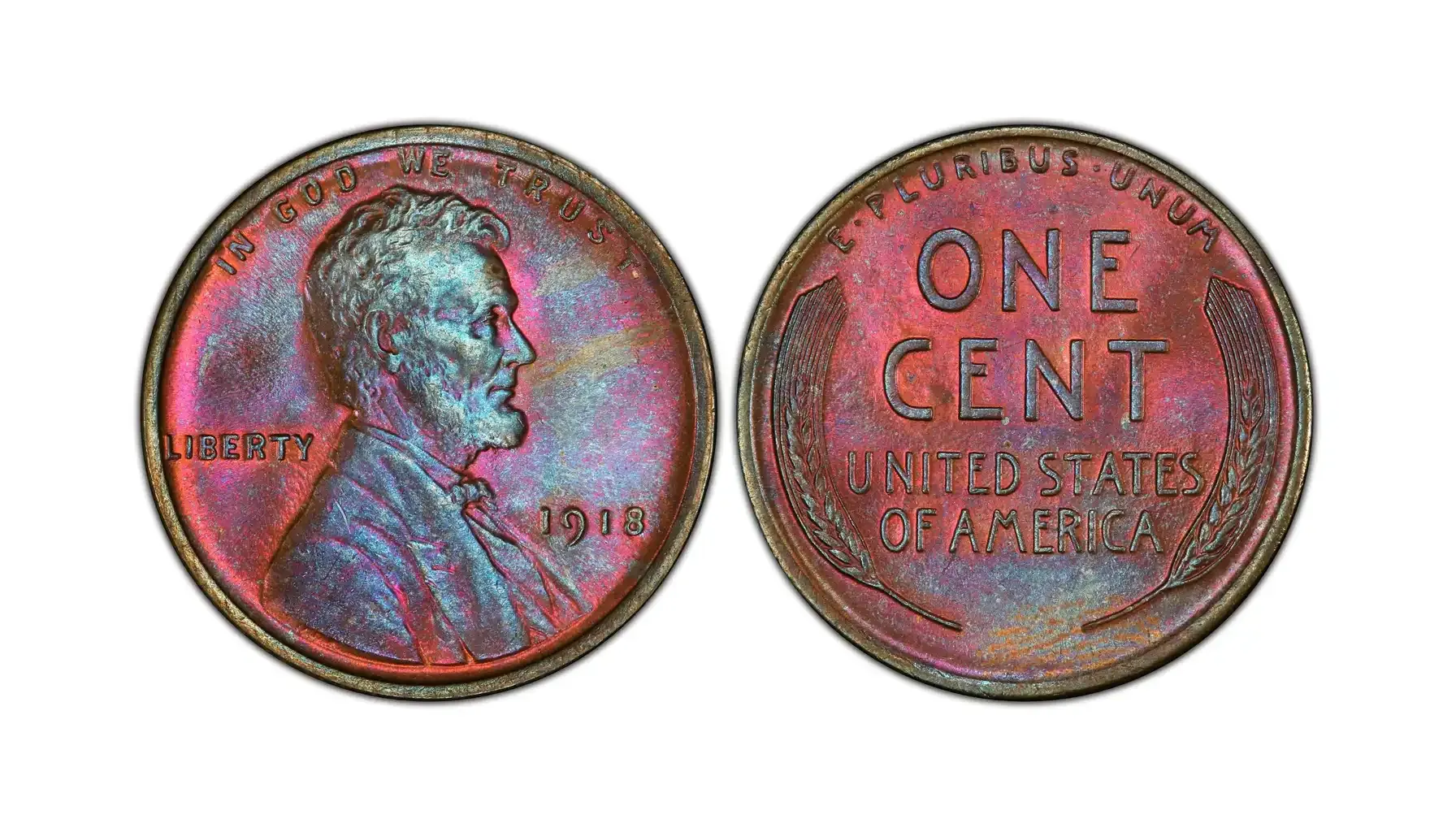
Name | 1918 Wheat Penny (No Mint Mark) |
Special Features | Designed by Victor David Brenner; depicts Abraham Lincoln on the obverse and two wheat stalks on the reverse. No mint mark indicates production at the Philadelphia Mint. |
Mintage | 288,104,634 |
Price | $1 - $400~ |
Listed prices are approximate and may vary depending on the coin's condition, market demand, and other factors
Market Value
Grade | Price (USD) |
Good (G-4) | $1 - $2 |
Fine (F-12) | $3 - $5 |
VF (VF-20) | $8 - $12 |
AU (AU-58) | $20 - $40 |
MS (MS-63 RB) | $60 - $100 |
MS (MS-65 RD) | $200 - $400~ |
Historical Context
A 1918 Wheat Penny no mint mark indicates it was struck at the Philadelphia Mint. Struck during the final year of World War I, these coins were essential for facilitating everyday transactions in a booming wartime economy. The design, introduced in 1909 to commemorate Abraham Lincoln's 100th birthday, was well-established by this point.
The vast mintage from Philadelphia ensured their widespread circulation, making them readily available today, though high-grade examples remain a challenge for collectors to acquire. A 1918 penny no mint mark is generally the most common variety from that year. The value of how much is a 1918 penny worth can range from a few dollars to thousands.
1918 Denver Wheat Penny
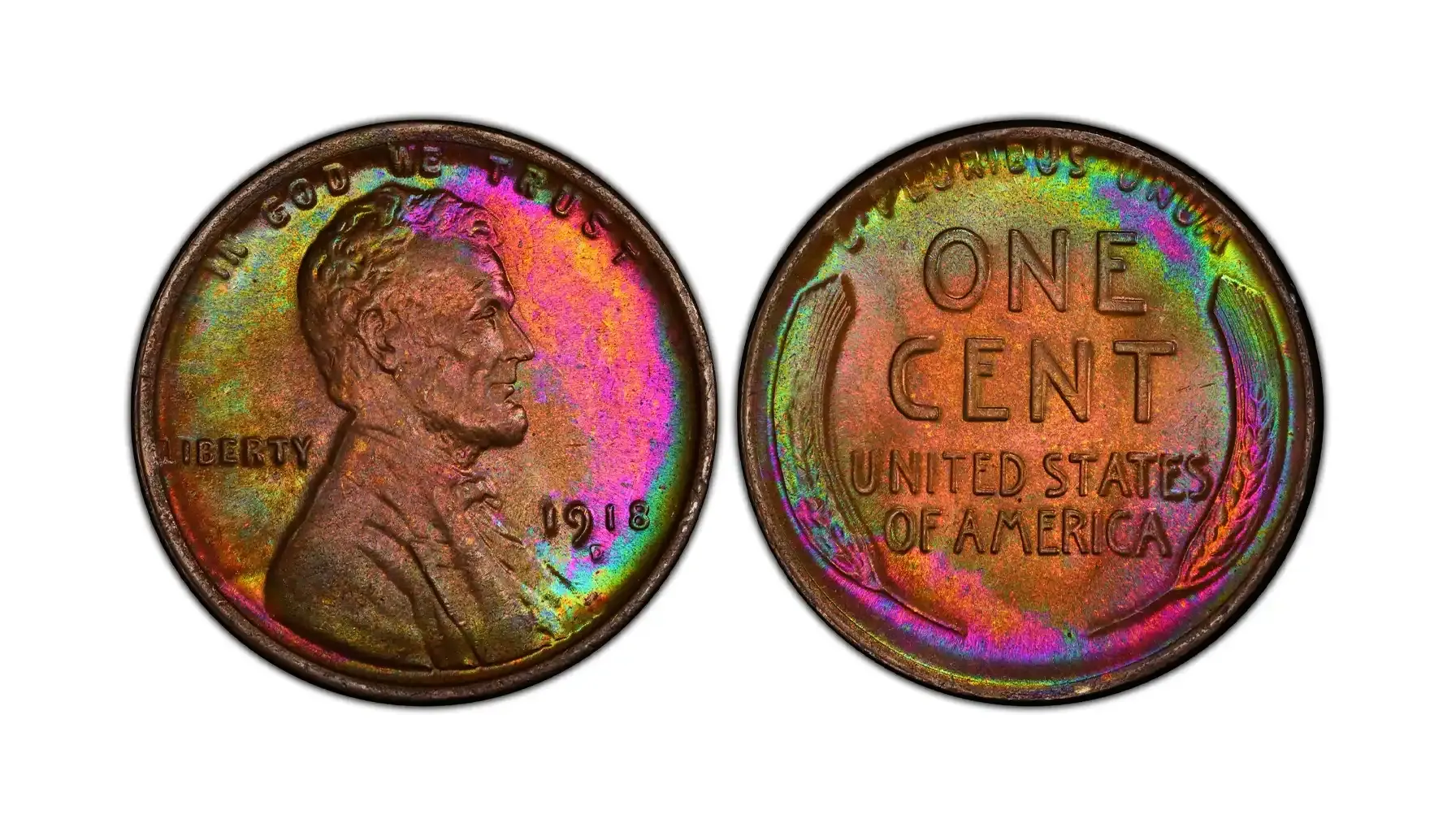
Name | 1918-D Wheat Penny |
Special Features | Produced at the Denver Mint, indicated by a "D" mint mark below the date. Shares the standard Lincoln and wheat stalks design. |
Mintage | 47,830,000 |
Price | $2 - $2,000~ |
Listed prices are approximate and may vary depending on the coin's condition, market demand, and other factors
Market Value
Grade | Price (USD) |
Good (G-4) | $2 - $4 |
Fine (F-12) | $7 - $15 |
VF (VF-20) | $25 - $45 |
AU (AU-58) | $70 - $120 |
MS (MS-63 RB) | $200 - $400 |
MS (MS-65 RD) | $1,000 - $2,000~ |
Historical Context
The 1918 D penny value is typically higher than the Philadelphia mint mark due to lower mintage. As a branch mint, Denver played a crucial role in distributing coinage throughout the western United States.
While still a substantial number, the lower mintage means that higher-grade examples are notably scarcer and thus more valuable than their Philadelphia equivalents. Understanding the 1918 D Wheat Penny value requires checking its specific grade.
1918 San Francisco Wheat Penny
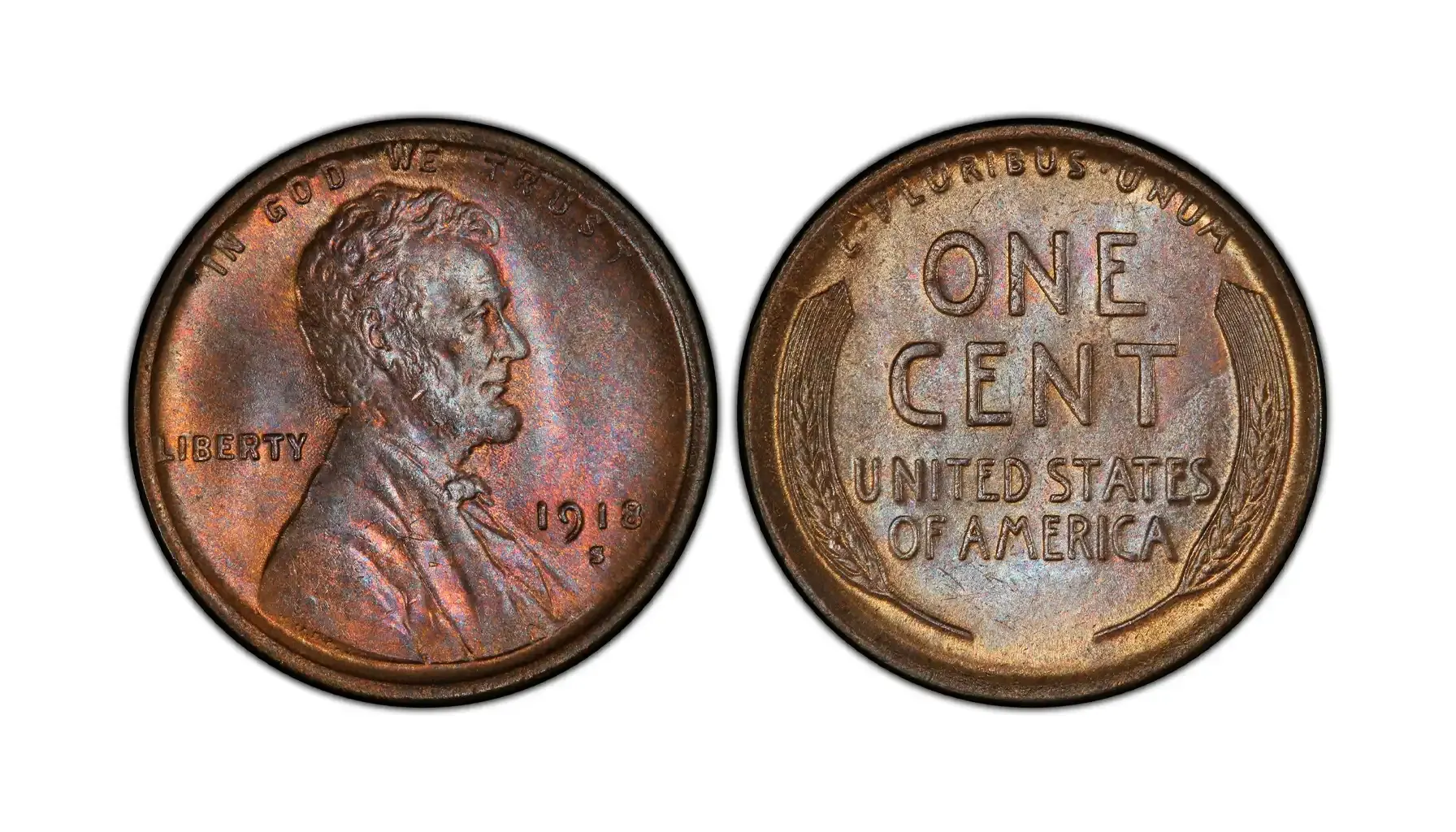
Name | 1918-S Wheat Penny |
Special Features | Produced at the San Francisco Mint, indicated by an "S" mint mark below the date. Shares the standard Lincoln and wheat stalks design. |
Mintage | 34,740,000 |
Price | $3 - $3,000~ |
Listed prices are approximate and may vary depending on the coin's condition, market demand, and other factors
Market Value
Grade | Price (USD) |
Good (G-4) | $3 - $6 |
Fine (F-12) | $10 - $20 |
VF (VF-20) | $30 - $60 |
AU (AU-58) | $100 - $200 |
MS (MS-63 RB) | $300 - $600 |
MS (MS-65 RD) | $1,500 - $3,000~ |
Historical Context
The 1918 S penny value is often the highest among the regular issues due to its lowest mintage. The San Francisco Mint primarily served the Pacific Coast states and the growing economies there. Collectors actively seek the 1918 S Wheat Penny value in higher grades. These coins represent the daily transactions of a nation expanding its presence on the global stage, with significant economic activity flowing through its western ports during and after the war.
1918 Wheat Penny DDO
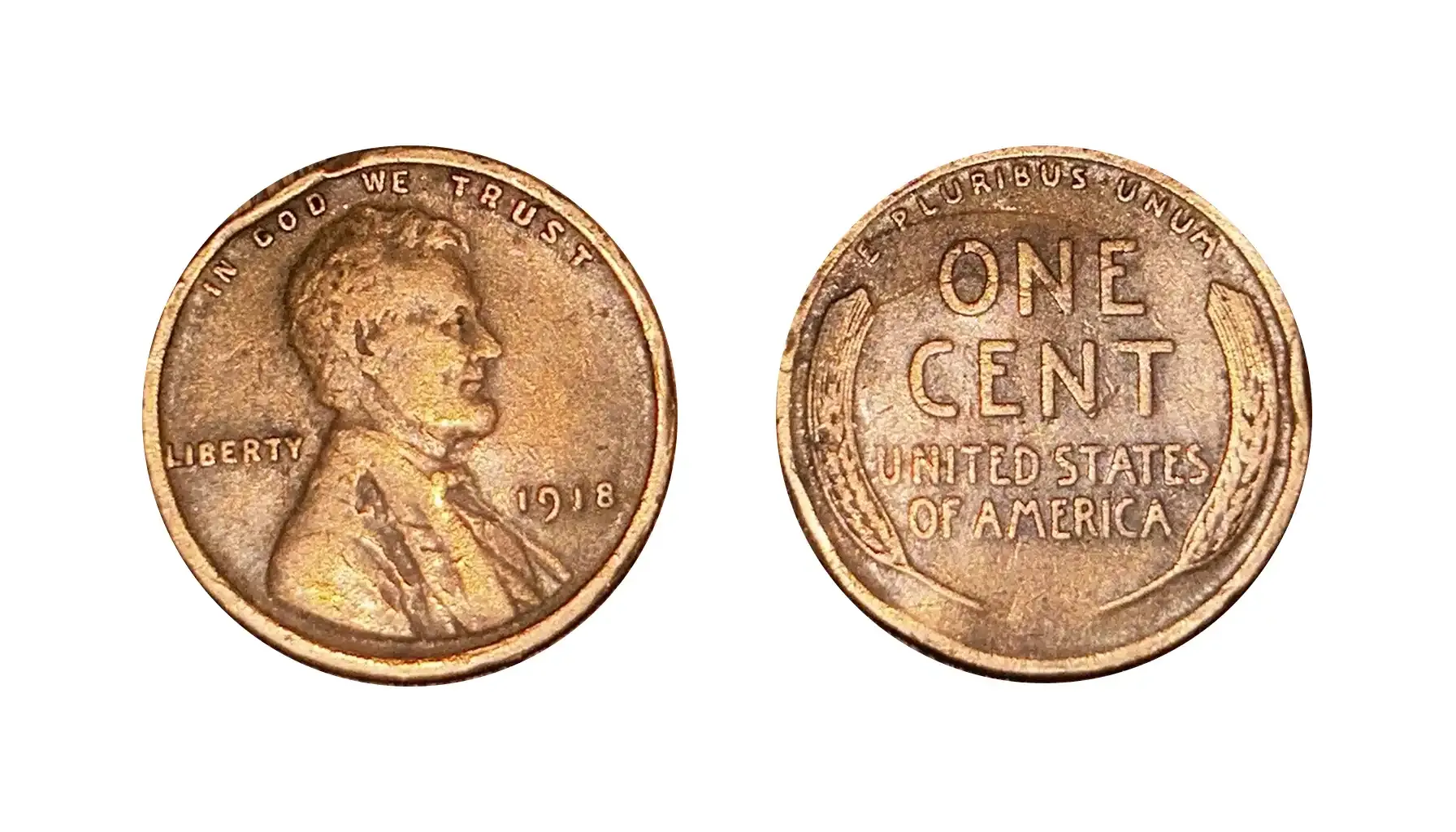
Name | 1918 Wheat Penny - Doubled Die Obverse (DDO) |
Special Features | Evidence of doubling on the obverse (front) design elements, such as the date, "LIBERTY," and Lincoln's bust. This occurs when the working die is improperly impressed with the hub during its creation, resulting in a shifted, doubled image. The degree of doubling can vary from minor to dramatic. |
Mintage | Extremely Low (Typically fewer than 100 known examples for significant varieties; often unique finds) |
Price | $200 - $5,000+ (Highly dependent on severity of doubling and coin grade) |
Listed prices are approximate and may vary depending on the coin's condition, market demand, and other factors
Market Value
Grade (Severity) | Price (USD) |
Circulated (Minor DDO) | $200 - $500 |
Circulated (Strong DDO) | $500 - $1,500 |
Uncirculated (Minor DDO) | $1,000 - $2,500 |
Uncirculated (Strong DDO) | $2,500 - $5,000+ |
Historical Context
A 1918 Wheat Penny error like a doubled die can dramatically increase its value. They are created when the working die, which imprints the design onto coin blanks, receives multiple impressions from the master hub, with each impression slightly misaligned. This results in the characteristic "doubled" appearance of the lettering or other design elements.
For the 1918 Wheat Penny, known DDOs are generally not as dramatic or well-known as those found on other years (e.g., 1955).The value of 1918 Wheat Penny is highly dependent on its condition and mint mark. These errors are accidental and thus had no intentional mintage, meaning their rarity is determined by how many slipped past mint inspection and how many have been discovered by collectors over time. Determining what is a 1918 Wheat Penny worth requires consulting a current price guide.
1918 Wheat Penny Off-Center Strike
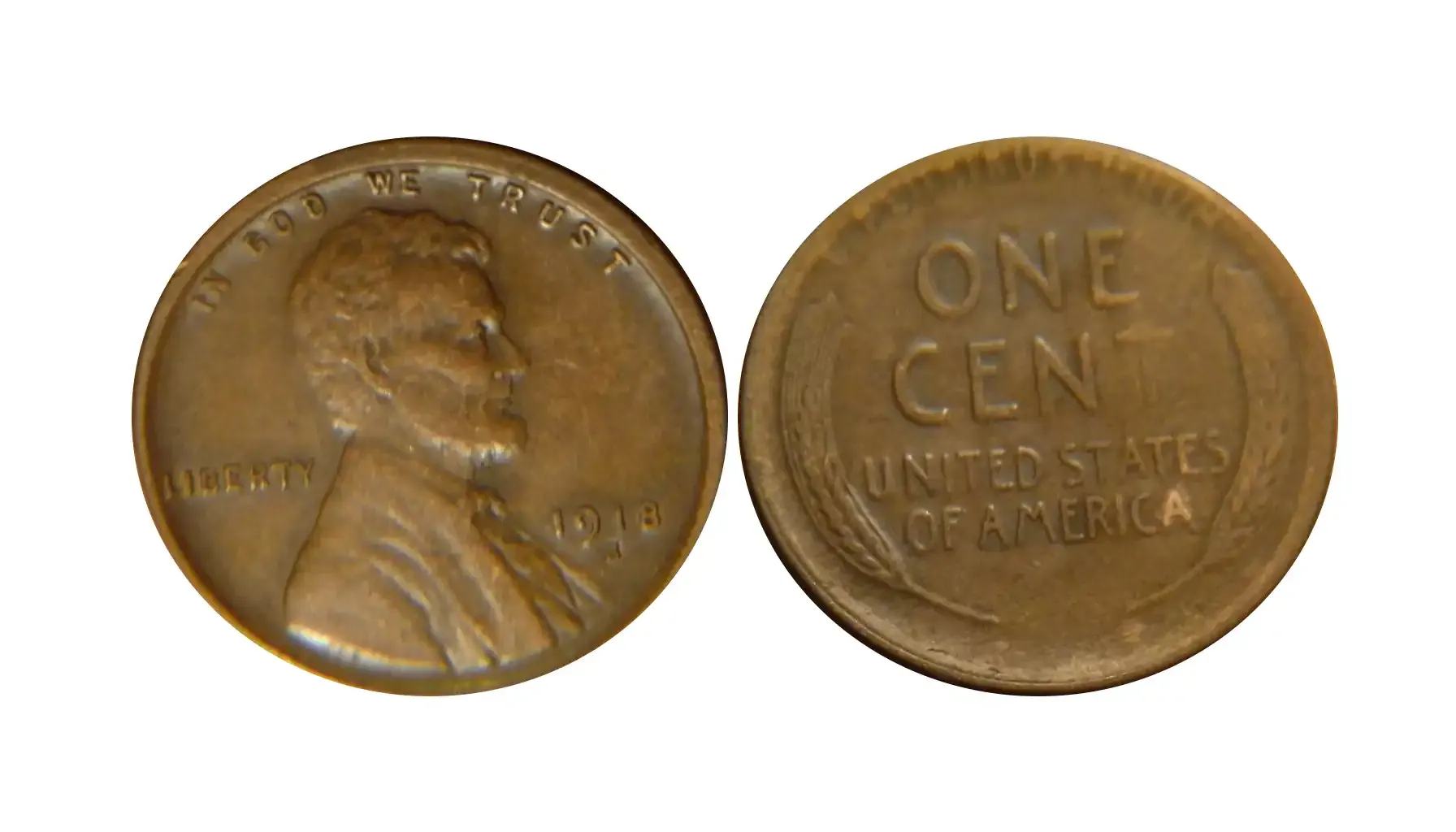
Name | 1918 Wheat Penny - Off-Center Strike |
Special Features | The coin's design is not fully contained within the coin's perimeter, leaving a blank crescent on one side and truncating the design on the opposite side. The percentage off-center determines the severity and value. |
Mintage | Extremely Low (Occasional anomalies; no official record) |
Price | $50 - $1,000+ (Highly dependent on percentage off-center and visible details) |
Listed prices are approximate and may vary depending on the coin's condition, market demand, and other factors
Market Value
Degree Off-Center & Grade | Price (USD) |
Minor (1-5% off) | $50 - $150 |
Moderate (5-20% off) | $150 - $400 |
Significant (20-50% off) | $400 - $1,000+ |
Extreme (>50% off, date legible) | $1,000s+ (if key features are visible) |
Historical Context
To find the value of a 1918 Wheat Penny, first identify its mint mark and condition. Off-center strike errors occur when the coin blank (planchet) is not properly seated within the coining press's collar during the strike. This causes the dies to strike the planchet partially, resulting in a design that is not entirely contained on the coin's surface.
The value of an off-center error is largely determined by the degree to which it is off-center (with around 10-50% often being most desirable for collector visibility) and if the date and mint mark (if present) are still legible. For a 1918 Wheat Penny, an off-center strike provides a tangible link to the rapid and sometimes imperfect processes of early 20th-century minting, where millions of coins were produced daily.
1918 Wheat Penny Die Crack

Name | 1918 Wheat Penny - Die Break |
Special Features | A raised line or irregular lump on the coin's surface, corresponding to a crack or piece breaking off the working die. Die breaks can range from thin, faint lines (die cracks) to large, raised areas (cuds) where a piece of the die broke off entirely. |
Mintage | Varies (Occur randomly; number of coins struck from a cracked die is unknown) |
Price | $10 - $500+ (Dependent on size, location, and visual impact of the break) |
Listed prices are approximate and may vary depending on the coin's condition, market demand, and other factors
Market Value
Type of Break & Grade | Price (USD) |
Minor Die Crack (Circulated) | $10 - $30 |
Significant Die Crack (Circulated) | $30 - $100 |
Minor Die Break (Uncirculated) | $50 - $200 |
Major Die Break (Cud) | $200 - $500+ |
Historical Context
Die breaks and die cracks are consequences of the immense pressure exerted during the minting process. Over time, and after striking tens of thousands or even millions of coins, the steel dies can develop hairline cracks or even break off chunks.
When a cracked or broken die strikes a coin, it leaves a raised line or lump on the coin's surface. Small cracks are common and add little value, but large "cuds" (where a significant portion of the die's edge breaks off) are quite dramatic and desirable. The actual value of a 1918 penny can be found by cross-referencing grading guides.
In conclusion, the question of how much is a 1918 no mint penny worth or indeed, is a 1918 penny worth anything at all, largely depends on its condition and specific characteristics.
While a common circulated 1918 penny might only fetch a few dollars, the 1918 penny value today can escalate dramatically for higher-grade examples, especially those from the Denver or San Francisco mints.
Furthermore, the discovery of a 1918 penny error, such as a doubled die or off-center strike, transforms an ordinary cent into a highly coveted and significantly valuable collectible.


